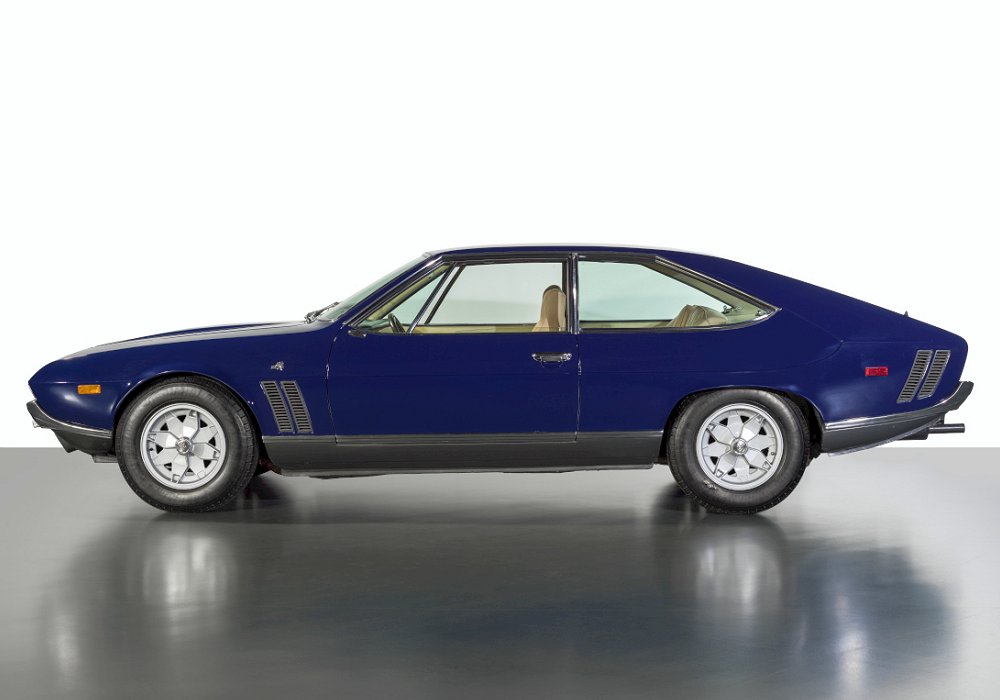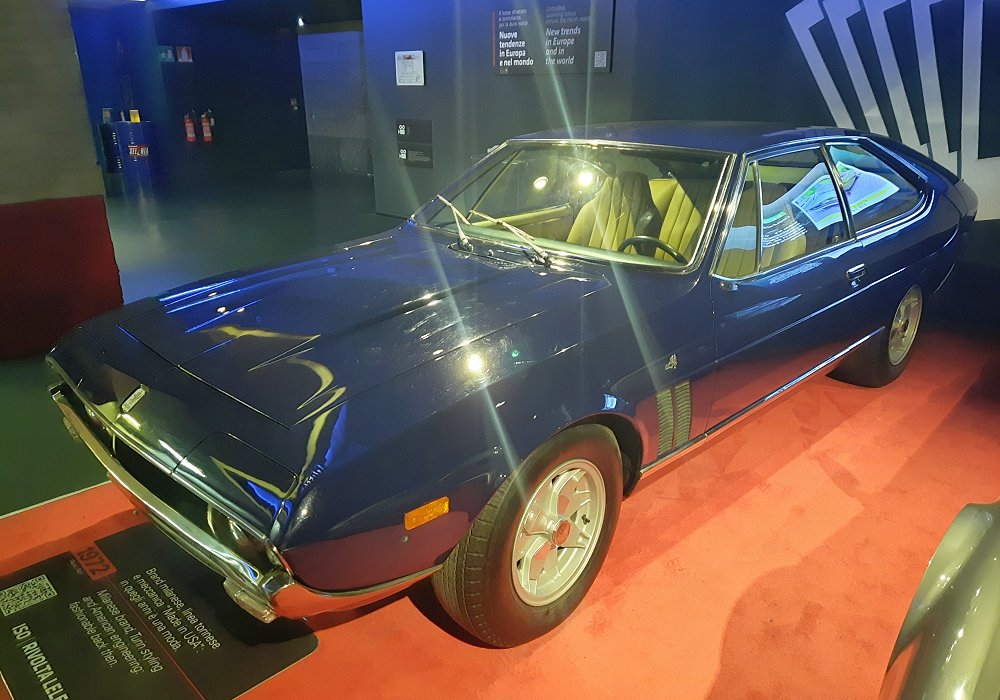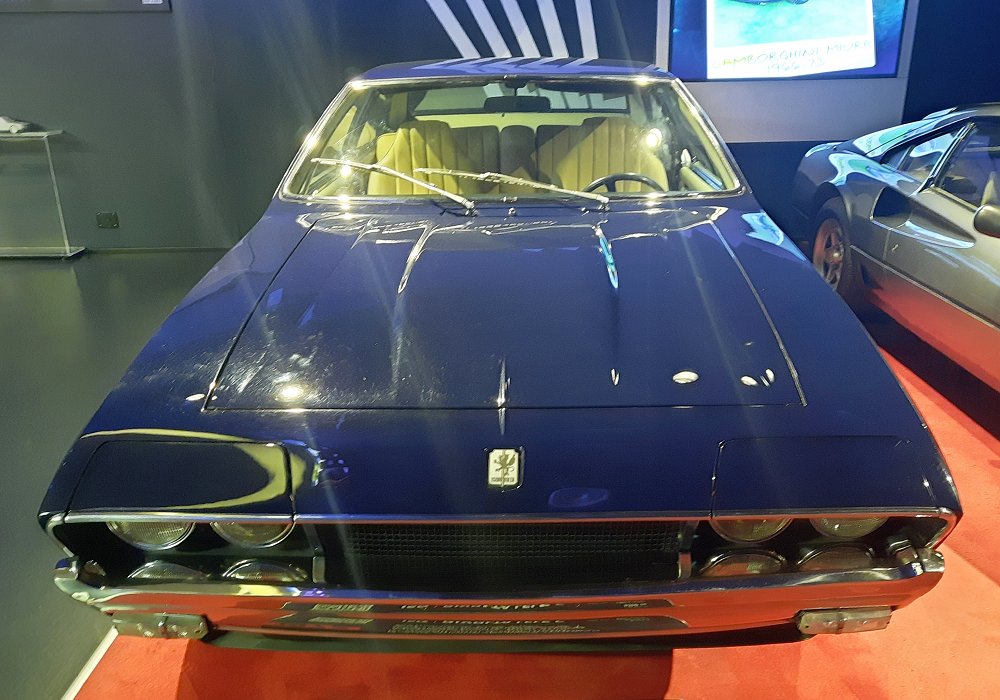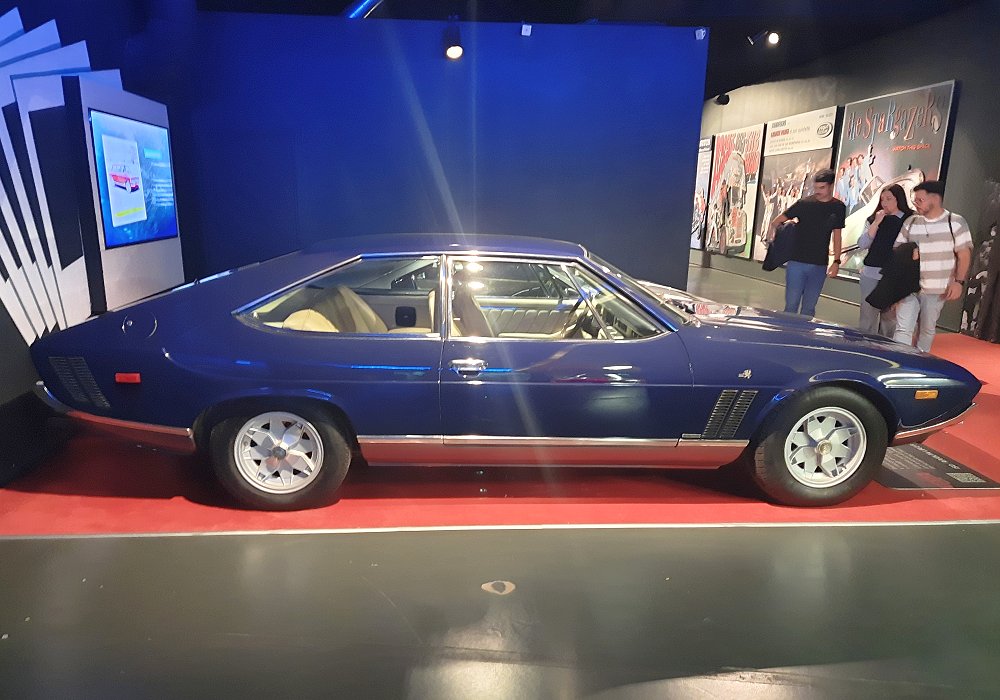Description
The ISO Rivolta Lele F was the refined and more powerful evolution of ISO’s luxurious 2+2 grand tourer — a car that encapsulated the final flourish of the brand’s golden age. Introduced in 1972, the Lele F represented the most developed form of ISO’s Lele model, itself launched in 1969 as a bridge between the muscular Grifo and the stately Rivolta IR series. Where earlier Leles had been powered by Chevrolet V8s, the Lele F reflected a new chapter in ISO’s story: the adoption of Ford’s Cleveland 351 cubic inch (5.8-litre) V8 under the new ownership of Alejandro de Tomaso. It was faster, smoother, and more refined than its predecessors — a sophisticated gran turismo that combined the elegance of Italian design with the deep reserves of American performance.
The Lele was conceived during one of ISO’s most ambitious periods. Renzo Rivolta had died in 1966, leaving his son Piero to carry forward the family legacy. Under his guidance, ISO sought to broaden its appeal by creating a grand tourer that combined the comfort and practicality of a four-seat luxury coupé with the style and performance of a sports car. To design it, ISO turned once again to the great Marcello Gandini at Bertone — then at the height of his powers, having just shaped the Lamborghini Miura and Espada. The result was a striking, angular car, named “Lele” in honour of Piero Rivolta’s wife. It was elegant but purposeful, with a modernist confidence that set it apart from the curvier grand tourers of the previous decade.
By 1972, however, ISO was changing. Alejandro de Tomaso had acquired control of the company, and his influence was immediately felt. General Motors’ Chevrolet engines were replaced by Ford’s 351 Cleveland V8, partly for political reasons — De Tomaso’s own Pantera used Ford power — and partly for supply consistency. The Lele F (for Ford) was born from this transition. Its 5.8-litre engine was offered in two states of tune: a standard 325 horsepower version and a higher-output 360 horsepower specification for the Lele Sport, using the same Holley carburetion and camshaft profile as the contemporary De Tomaso Pantera GTS. Both engines were mated to either a five-speed ZF manual gearbox or a three-speed Ford automatic, delivering smooth and effortless performance suited to long-distance driving.
The Lele F’s chassis was a sophisticated steel monocoque design derived from the earlier Rivolta and Grifo architecture, tuned for comfort and stability rather than pure sportiness. It used independent front suspension with double wishbones and coil springs, and a de Dion rear axle with trailing arms, a Watts linkage, and inboard disc brakes — a configuration that combined high-speed stability with a supple ride. Ventilated disc brakes were fitted all around, and power-assisted steering made the car remarkably easy to handle in traffic despite its size. With a top speed of around 240 km/h (150 mph) and acceleration from 0 to 100 km/h (62 mph) in just under seven seconds, the Lele F delivered grand-touring pace with limousine smoothness.
Stylistically, Gandini’s design had matured gracefully since the model’s debut. The Lele F retained its distinctive wedge profile, long bonnet, and crisp beltline, but small refinements gave it a more purposeful stance. The squared-off nose, concealed headlamps, and frameless side windows created a cohesive, aerodynamic shape that hinted at the emerging 1970s design language — angular, clean, and confident. Chrome was used sparingly, emphasising the car’s sharp lines rather than decoration. The Bertone bodywork was built to an exceptional standard, and each car was hand-finished at ISO’s Bresso factory near Milan, giving the Lele an air of bespoke exclusivity rare even among Italian GTs.
Inside, the Lele F offered an atmosphere of opulent modernity. The cabin was spacious and richly appointed, trimmed in the finest Connolly leather with deep carpets and polished wooden inserts. The dashboard was completely redesigned from the earlier Chevrolet-powered Leles, now featuring a full suite of Veglia instruments set within a horizontal fascia and flanked by sculpted air vents. Ergonomics were improved, with revised switchgear and better seating position, while optional air conditioning and electric windows enhanced comfort. The rear seats, though smaller than the fronts, were perfectly usable, making the Lele F one of the few genuine four-seaters in its class. The boot was large enough for long-distance touring — this was a car built for continent-crossing journeys as much as for style.
On the road, the ISO Rivolta Lele F revealed its dual personality. At low speeds, it behaved like a refined luxury coupé, the big Ford V8 whispering under light throttle, the power steering making manoeuvring effortless. Yet at higher speeds, the car transformed into a grand tourer of remarkable pace and composure. The engine delivered deep, effortless thrust, the five-speed ZF gearbox shifting with precision, and the chassis providing stability even at very high cruising speeds. The suspension absorbed imperfections with ease, and the de Dion layout ensured the car remained level and poised through fast corners. Contemporary testers praised its combination of speed, quietness, and comfort — “a car that carries its strength with grace,” one journalist wrote, summing up its character perfectly.
Although the Lele F was technically advanced and beautifully executed, it arrived at a difficult time. The early 1970s oil crisis and tightening emissions regulations struck the luxury-GT market hard, and ISO, already financially strained, struggled to survive. Production of the Lele F continued until 1974, when the company finally closed its doors. In total, around 160 Leles were built across all variants, with the Ford-powered “F” cars making up roughly the last third of production.
Today, the ISO Rivolta Lele F is cherished by collectors as one of the last true grand tourers of the classic era — a car that combined the best elements of Italian design, engineering sophistication, and American reliability. Its rarity, angular Gandini styling, and smooth Ford powertrain make it one of the most distinctive GTs of the early 1970s.
The Lele F was the final chapter in ISO’s proud story: a car of quiet strength, grace, and modern confidence. It captured the essence of the Italian gran turismo ideal — elegance without excess, speed without noise — and it stands today as a poignant reminder of a time when art, craftsmanship, and power met in perfect harmony under the banner of ISO Rivolta.





